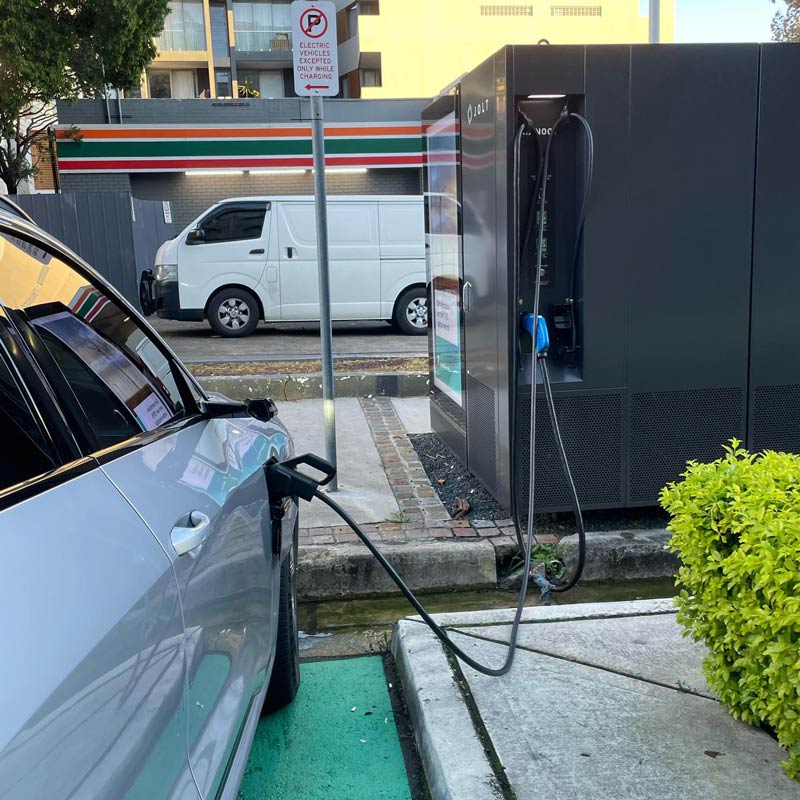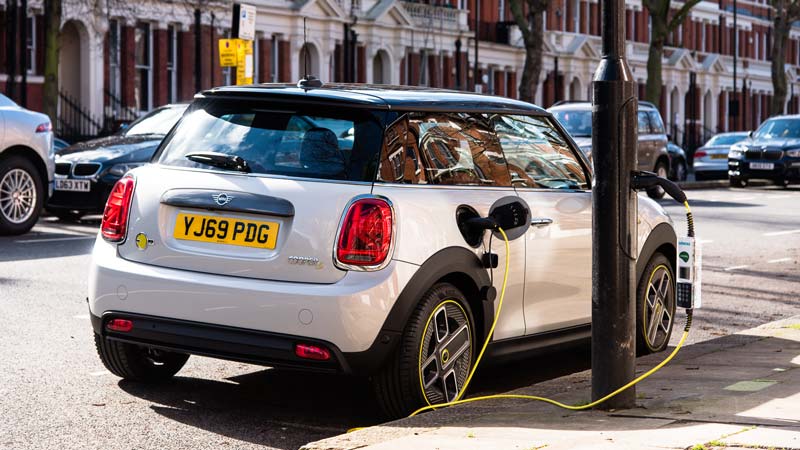As the push for electric vehicles (EVs) continues, one of the main issues holding some drivers back from making the switch is the lack of easily accessible charging infrastructure.
The case is especially so in the city, because many inner city dwellers live in terraces or apartments and may not have access to either a driveway or a garage.
And although there are (slowly) increasing numbers of publicly accessible fast-chargers, the large influx of Tesla Model 3s and Model Ys, as well as the Atto 3 from newcomer BYD in coming months will mean there is increasing demand for these chargers in city locations.
But this could be alleviated if there were more on-street charging solutions. The lack of this has in some places led EV owners to run cables across footpaths to charge their vehicles.
To reduce the chance of tripping pedestrians, drivers often use brightly covered cable covers. However, legalities around running cables across footpaths are a concern.
Charging cable running over the footpath in Collingwood. Okay or not okay? Ping @victoriawalks @YarraCouncil pic.twitter.com/1DNezZ8Ciy
— Bianco Zhivago (@Bianco_Zhivago) March 27, 2022
This lack of infrastructure is one of the main reasons why EV adoption is perhaps not as high as it could or should be. Though the EV market in Australia tipped over the 2% mark in 2021 and is set for a record year in 2022, it is still lagging far behind the global 2021 average of more than 10%.
This lack of on-street charging points is clearly something that needs to be addressed if more people are to make the switch to electric in order to help meet net zero targets.
There are a few different ways that this problem could be solved. One is allowing homeowners to have a gully cut into the footpath to make running cables out to cars safer. However, this presents issues if residents are unable to park outside their home.
This is Alistair's house and Wyre council (part of Lancashire County Council) are trialing a concrete gully to enable him to charge his EV from his house (when the space outside his house is free). It's not perfect but if all of the homes without off street parking had similar… pic.twitter.com/V8vUJNKq6B
— Tesla Owners UK 🇬🇧 (@TeslaOwnersUK) May 12, 2022
Another is for local government to invest in installing more on-street charging points in inner city areas.
In the UK, there has been some progress made on this issue, by installing charge points in lamp posts. For example, in 2020 electrification giant Siemens converted all the lamp posts in a kilometre-stretch of road in Westminster in what was thought to be a first for the UK.
There are still some concerns about tripping risks of on-street charging solutions though, as can be seen in the tweets below.
Lamppost charging points can present tripping risks. Warning matts covering footpath cables are warning users of this tripping risks. Councils must improve and allow charging cable gullys for terraced homes at reasonable costs. pic.twitter.com/6Vy2JTeeib
— David Clark-Bell (@dclarkbell) June 17, 2022
One way of alleviating this concern would be to provide a retractable cable with the lamp post that is only long enough to reach an EV-only carpark. However, then there is the risk of that park being “ICEd”, which means a combustion car parks there, blocking the space.
Another solution that is being rolled out is by Jolt, which utilises existing on-street electricity boxes to provide 7kW free charging (after this, it costs 40c/kWh). There are several examples in Sydney that are largely clustered between Ashfield and Homebush (locations can be found on Plugshare.)

Whichever solution is chosen, it is clear that something needs to be done to improve the charging infrastructure in inner city areas if we want to see more people making the switch to EVs.

Bridie Schmidt is associate editor for The Driven, sister site of Renew Economy. She has been writing about electric vehicles since 2018, and has a keen interest in the role that zero-emissions transport has to play in sustainability. She has participated in podcasts such as Download This Show with Marc Fennell and Shirtloads of Science with Karl Kruszelnicki and is co-organiser of the Northern Rivers Electric Vehicle Forum. Bridie also owns a Tesla Model Y and has it available for hire on evee.com.au.


